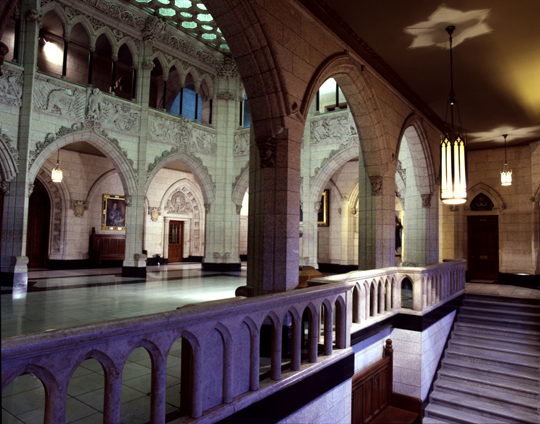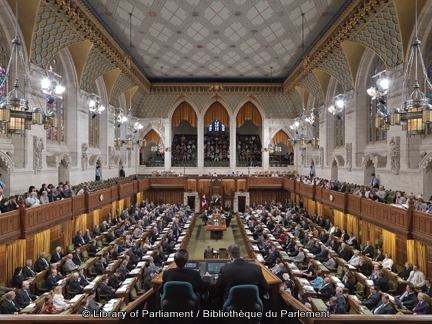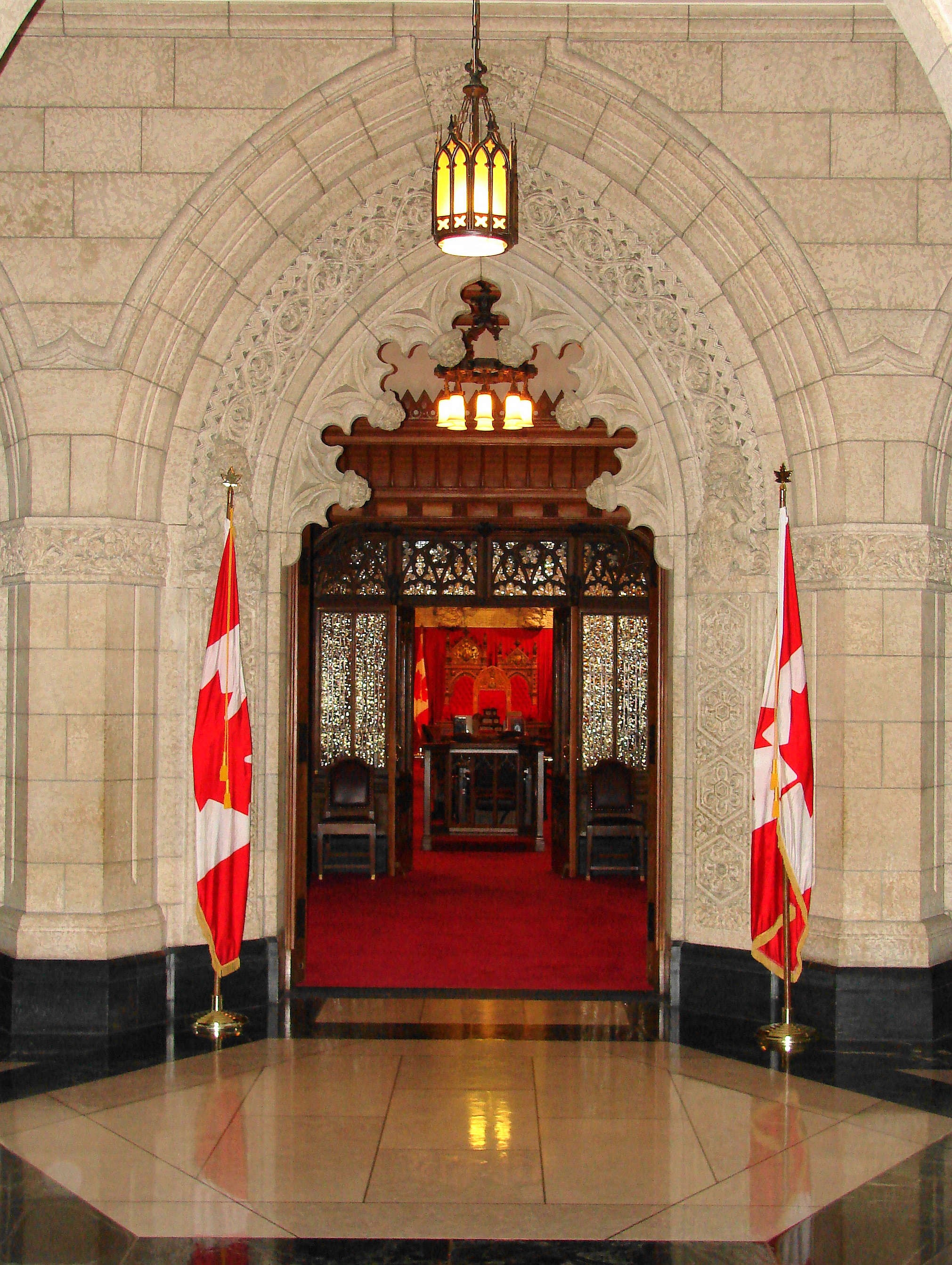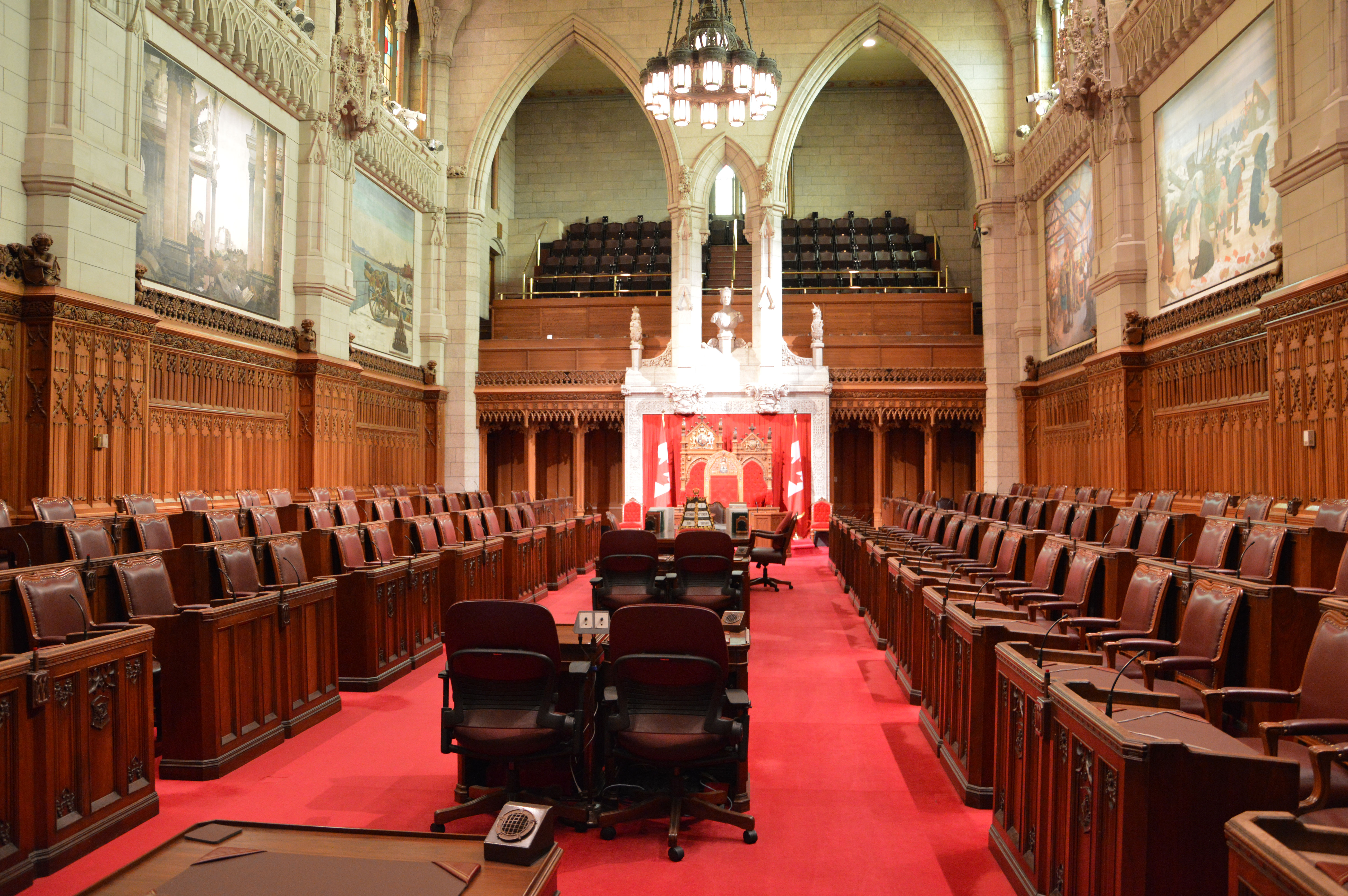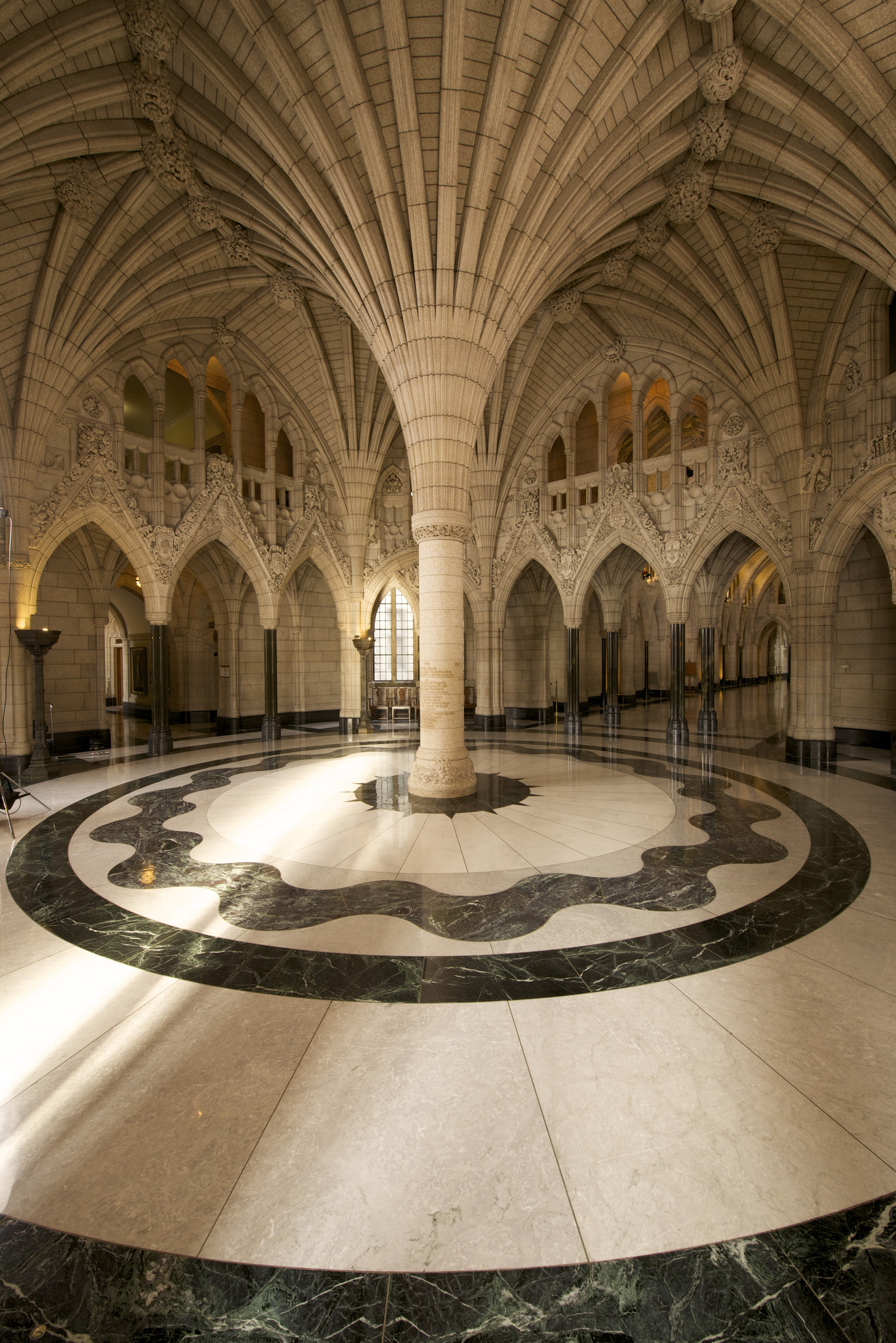Centre Block: History and design
The Centre Block and the Peace Tower were designed and decorated to honour Canada's people, history and freedoms.
Hall of Honour
The Hall of Honour is a magnificent example of High Gothic Revival architecture. The hall is the Centre Block's primary ceremonial space and walkway. It is also the dividing line between the House of Commons and the Senate.
With its noble limestone arches, vaulted ceilings and detailed ironwork, the hall pays tribute to the people and traditions of Parliament.
A number of different sculptures sit in the north end of the hall. Its largest sculpture is a memorial to nursing in Canada. The sculpture shows how nurses built Canada and participated in the First World War. The themes are also shown in other sculptures in the hall.
Several notable events have occurred in the hall. Former Prime Minister Pierre Trudeau and Canada's Unknown Soldier have lain in state here.
House of Commons foyer
The House of Commons foyer is the Centre Block's primary meeting place. It has vaulted ceilings, marble floors and dramatic lighting. Designers, artists and sculptors are still working on the unfinished foyer. It was rebuilt after the fire in 1916.
Many Canadians recognize the foyer from media scrums. During this ritual, journalists ask members of Parliament questions after question period and after debates in the House of Commons.
The foyer's lower level contains sculptures that depict themes of art, history and philosophy. In the upper level, the stonework shows the coat of arms of each Canadian province. It also contains images of Canada's industries and industry leaders.
The foyer's earliest sculptures were carved in 1919. These sculptures are of exaggerated human faces and mythical beasts. The foyer also contains framed portraits of Canada's prime ministers, contributing to the foyer's dignified character.
House of Commons Chamber
In the House of Commons Chamber, Members of Parliament debate issues and make laws for all Canadians.
The layout and design of the chamber reflect Canada's history. Its colour, layout and many of its ceremonies and traditions recall a time before Canada became a nation. The chamber also contains many Canadian symbols. Provincial and territorial flowers are etched into its stained glass, and Canadian wildlife is carved into its ornate borders.
Senate foyer
The Senate foyer is the ceremonial entrance to the Senate Chamber. It contains several elegant columns and arches. Eight paintings of past kings and queens line the foyer's walls. The portraits of Her Majesty Queen Elizabeth II and Queen Victoria are both originals. The portrait of Queen Victoria has been rescued from fire four times!
The foyer's colourful stained glass ceiling features royal symbols, provincial coats of arms and figures of the founding peoples of Canada. The ceiling also includes the names of all the speakers of the Senate up to 1920, when it was installed.
Under the ceiling, sculptures pay tribute to the people and the events that shaped Canada before Confederation. The team of four sculptors that built these sculptures added their own faces to the foyer, without permission, of course!
Senate Chamber
The Senate Chamber is the Upper House of Canada's Parliament. It plays a central role in this country's legislative process by acting as the "chamber of sober, second thought." How? By examining and debating bills already passed by the House of Commons.
The Senate Chamber is where the Queen or her representative, the Governor General, addresses Parliament and gives assent to bills destined to become law.
The red carpet, the gold coffered ceiling, the massive bronze chandeliers and the intricate carved stonework show how the chamber is a ceremonial and significant place.
Learn more about the work of the Senate.
Rotunda
The rotunda is the formal entrance to Centre Block. It is also known as Confederation Hall, and it represents the heart of Centre Block. It sits at the middle of the walkway that links two cores of democracy in Canada: the House of Commons and the Senate.
The rotunda has a high-vaulted ceiling, symbols and coats of arms of each province and territory. It acts to welcome its visitors to the heart of Canadian politics.
In the middle of this circular room is a magnificent column. The column is imposing yet dignified and it serves as the rotunda's focal point. A mariner's compass and a swirling marble pattern, symbolizing waves, surround the base of the column. These images signify the importance of water in Canada's development. The column bears an inscription that is dedicated to all those who served in the First World War.

